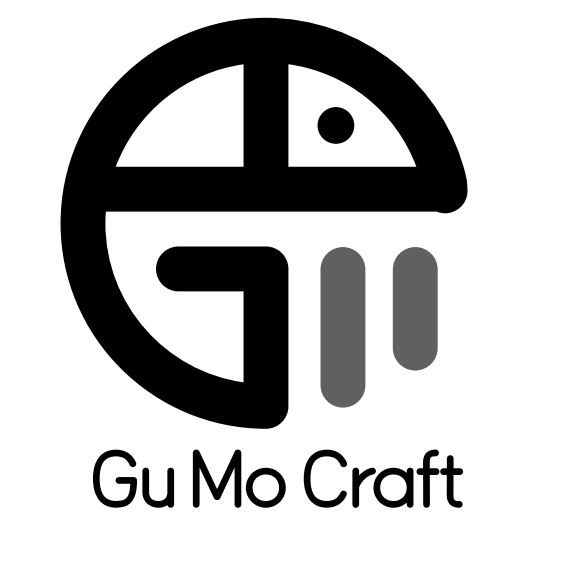The Enduring Legacy of Traditional Wood Carving
Wood carving is one of humanity’s oldest artistic traditions, dating back thousands of years. Across cultures, artisans have transformed raw timber into intricate sculptures, functional objects, and decorative pieces. At Gumowoodcrafts, we preserve these age-old techniques, ensuring each creation reflects the skill and dedication of master carvers.
This in-depth guide explores the essential methods, tools, and styles that define traditional wood carving. Whether you are a craftsman, collector, or enthusiast, understanding these techniques enhances appreciation for this enduring art form.
The Fundamentals of Wood Selection
Before carving begins, selecting the right wood is crucial. Different species offer unique textures, densities, and grain patterns that influence the final piece.
Best Woods for Carving
-
Basswood – Soft and fine-grained, ideal for beginners and detailed work.
-
Mahogany – Durable with a rich reddish-brown hue, perfect for elegant sculptures.
-
Walnut – Harder than basswood but carves smoothly, offering a deep, luxurious finish.
-
Oak – Tough and strong, often used for large-scale carvings and furniture.
-
Pine – Affordable and soft, suitable for practice and rustic designs.
Each wood type responds differently to carving tools, affecting precision and finish. Master carvers study grain direction to avoid splintering and ensure clean cuts.
Essential Tools for Traditional Wood Carving
A woodcarver’s toolkit is an extension of their skill. While modern power tools exist, traditional hand tools remain indispensable for fine detailing.
1. Chisels & Gouges
-
Straight Chisels – Flat blades for smoothing and straight cuts.
-
Skew Chisels – Angled edges for precise corners and tight spaces.
-
V-Parting Tools – Create sharp lines and decorative grooves.
-
U-Gouges – Curved blades for hollowing and shaping concave surfaces.
2. Carving Knives
-
Detail Knives – Small, sharp blades for intricate patterns.
-
Whittling Knives – Sturdy, ergonomic handles for controlled cuts.
3. Mallets & Hammers
-
Wooden Mallets – Used with chisels for controlled force without damaging tools.
-
Rubber Mallets – Softer impact for delicate work.
4. Sharpening & Finishing Tools
-
Sharpening Stones – Maintain razor-sharp edges on blades.
-
Rasps & Files – Smooth rough surfaces before final sanding.
-
Burnishers – Polish carved details for a refined look.
Core Traditional Wood Carving Techniques
1. Relief Carving – Bringing Depth to Flat Surfaces
Relief carving creates a raised design on a wooden panel, with depth varying from shallow (low relief) to dramatic (high relief). This technique is prominent in architectural decorations, ornamental doors, and wall hangings.
Process:
-
Outline the design on the wood surface.
-
Remove background material using gouges.
-
Gradually deepen the central design for a 3D effect.
-
Refine edges and add textures for realism.
2. Chip Carving – Precision in Geometric Patterns
Chip carving involves removing small "chips" of wood to form intricate geometric designs. Common in jewelry boxes, trays, and furniture embellishments.
Key Methods:
-
Three-Corner Chip – A triangular cut creating symmetrical patterns.
-
Straight-Line Chip – Simple, clean lines for minimalist designs.
3. Whittling – The Simplest Form of Carving
Using only a knife, whittling produces smooth, flowing shapes. Popular for crafting small figurines, walking sticks, and rustic decor.
Tips for Whittling:
-
Always carve away from your body for safety.
-
Use controlled, shallow cuts to avoid splitting the wood.
-
Softwoods like basswood and pine are best for beginners.
4. Carving in the Round – Fully Three-Dimensional Sculptures
Unlike relief carving, this technique creates standalone sculptures viewable from all angles. Common in figurines, animal carvings, and religious icons.
Steps Involved:
-
Start with a rough block and remove excess wood.
-
Define major shapes (head, limbs, torso).
-
Add finer details (facial features, textures).
-
Sand and finish for a polished look.
5. Scandinavian Flat-Plane Carving – Bold and Stylized
Originating in Nordic traditions, this method uses flat, angular cuts with minimal rounding. The result is a distinctive, folk-art aesthetic seen in wooden toys and decorative pieces.
Characteristics:
-
Sharp, chiseled planes.
-
Minimal sanding for a handcrafted feel.
-
Often painted in bright, traditional colors.
Advanced Techniques for Experienced Carvers
For those mastering the basics, more complex methods elevate wood carving to an art form.
1. UnderCutting in Relief Carving
Creates shadows and depth by carving beneath overhanging elements.
2. Pierced Carving (Openwork)
Removes entire sections of wood, producing lace-like patterns. Common in screens and decorative panels.
3. Texturing Methods
-
Stippling – Small dots create rough textures (e.g., animal fur).
-
Sgraffito – Scratched designs for added detail.
The Gumowoodcrafts Process: From Wood to Masterpiece
Every Gumowoodcrafts piece undergoes a meticulous journey:
-
Design & Sketching – Artists draft detailed plans, considering proportions and aesthetics.
-
Wood Preparation – Selecting and seasoning the wood to prevent warping.
-
Rough Carving – Shaping the basic form with saws and large gouges.
-
Detailing – Refining with smaller tools for precision.
-
Sanding & Finishing – Smoothing surfaces and applying natural oils or waxes.
Preserving Tradition in Modern Craftsmanship
While technology offers shortcuts, hand carving remains unmatched in authenticity. At Gumowoodcrafts, we blend heritage techniques with contemporary designs, ensuring each piece tells a story.
For aspiring carvers, practice and patience are key. Start with simple projects, gradually tackling complex designs as skills improve.

